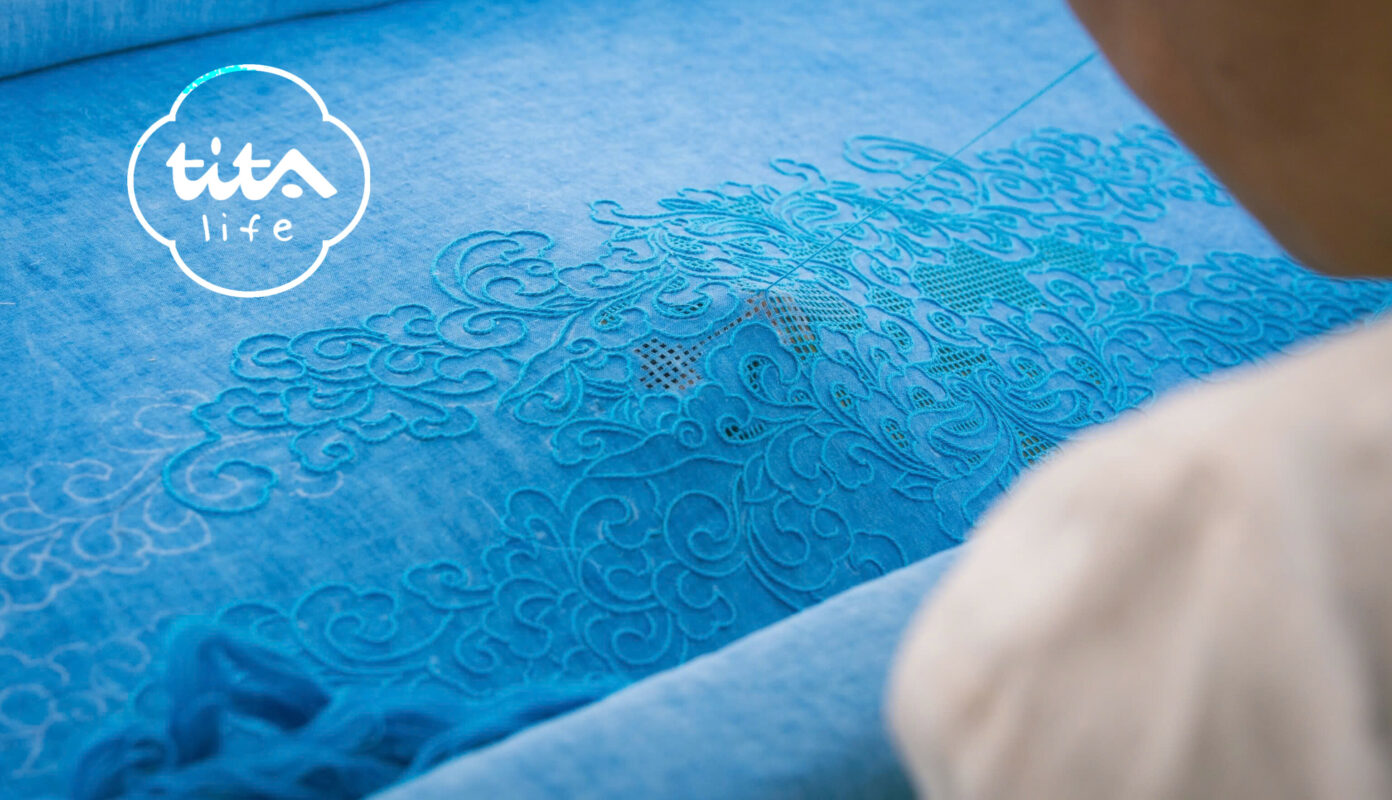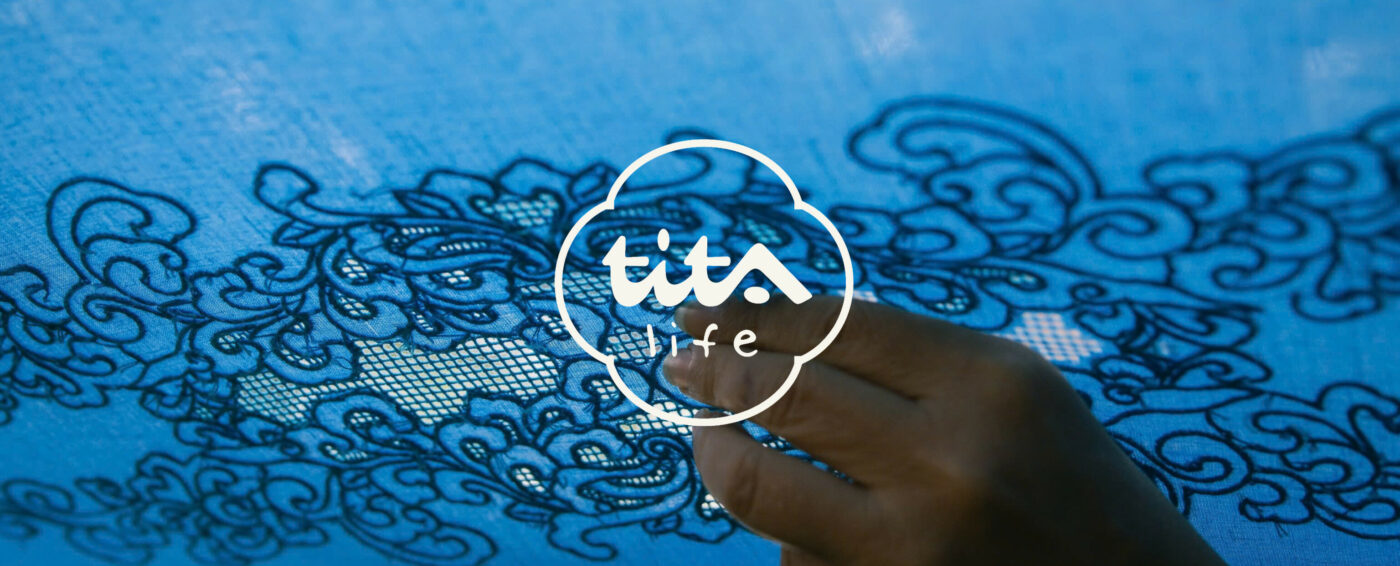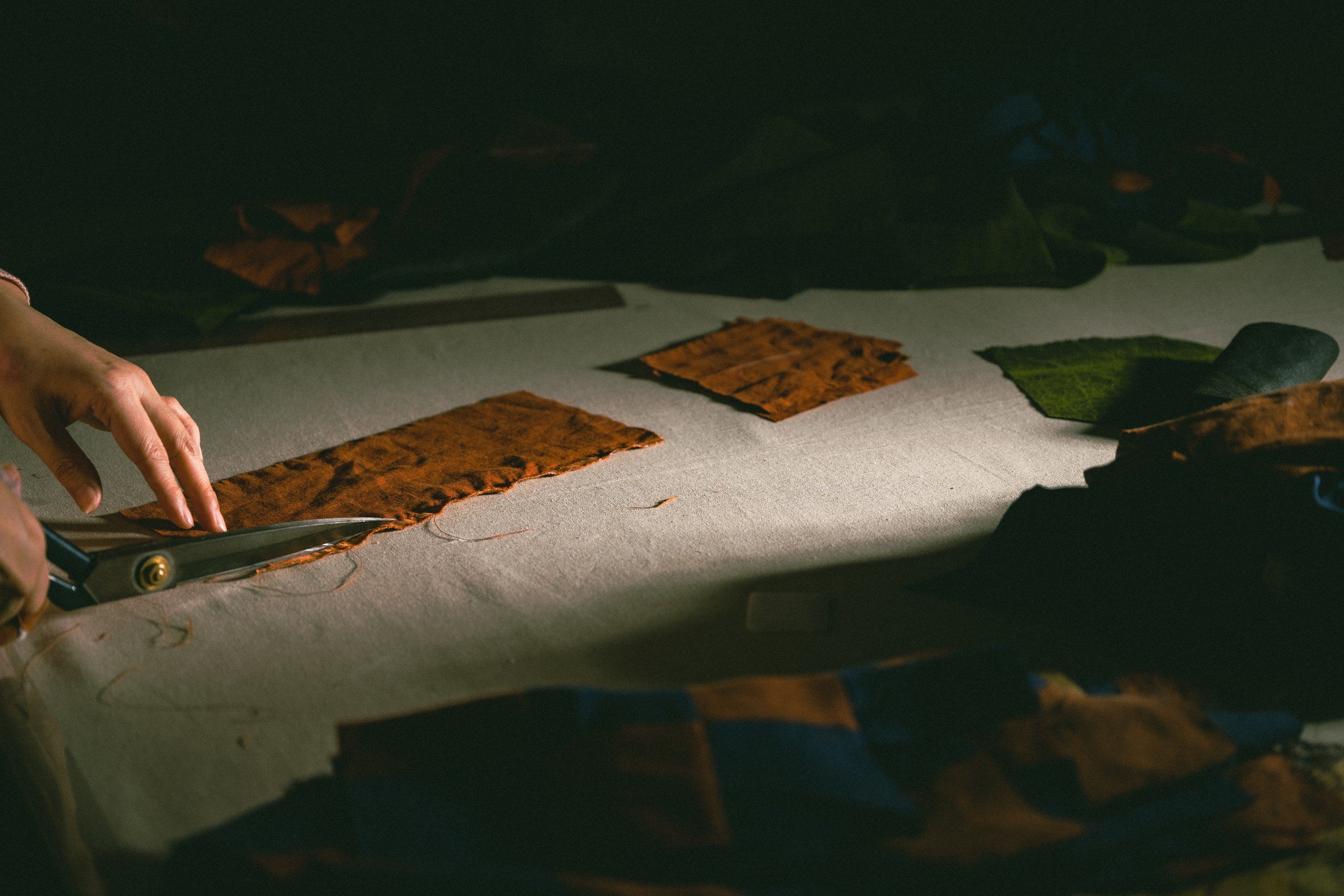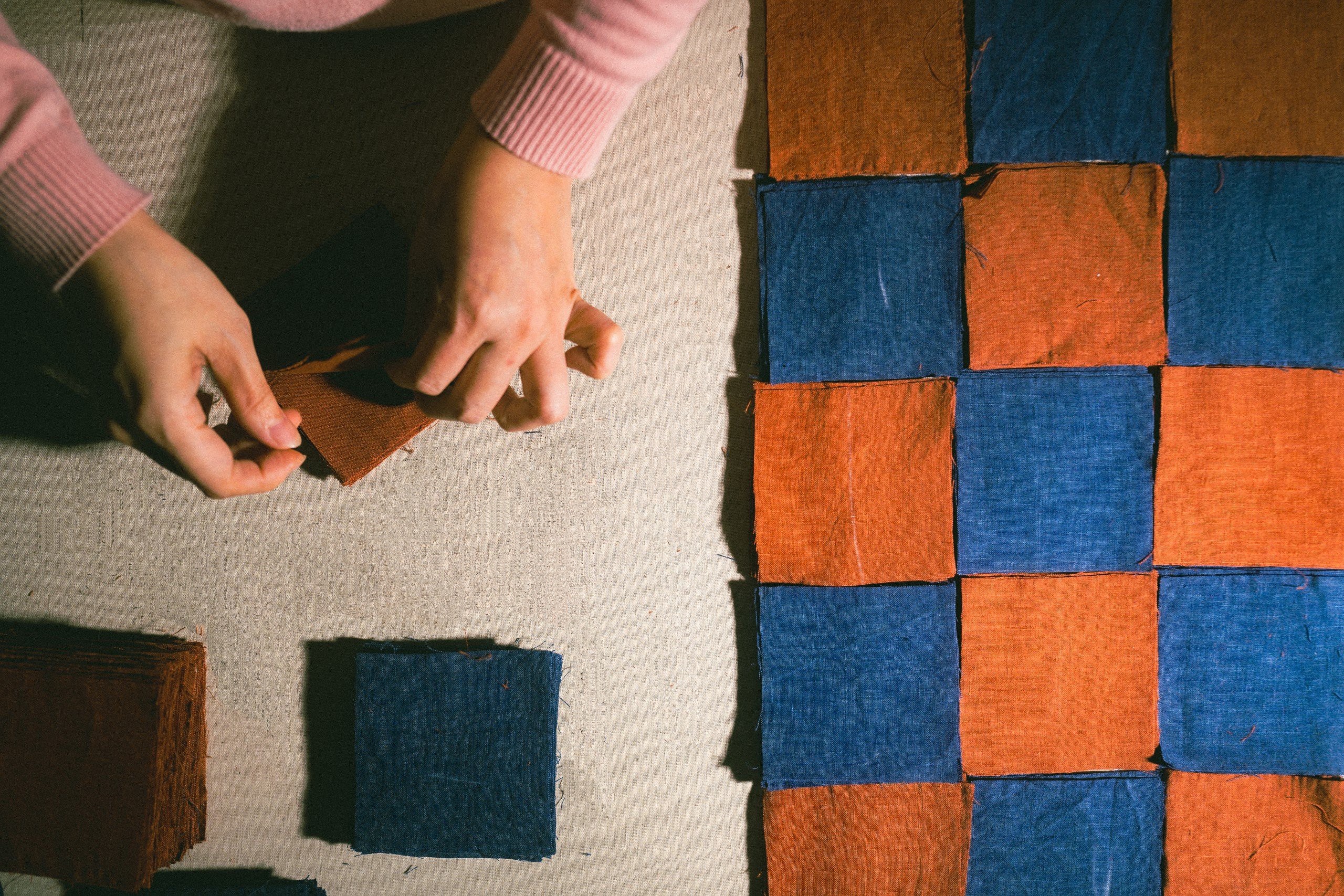
Lace Embroidery, a refined and intricate technique, has existed for centuries, becoming a symbol of luxury and sophistication in high fashion and the elite lifestyle. The art of lace embroidery, once featured in royal families and palaces, showcases class and nobility. The delicate and meticulous patterns created by artisans not only beautify clothing and living spaces but also become symbols of power and extravagance.

In fashion, lace embroidery is especially favored for decorating wedding dresses, evening gowns, and performance costumes, creating a magnificent appearance and affirming the wearer’s status. Outfits using this technique offer an elegant and noble beauty, establishing a prominent position in haute couture. Additionally, lace embroidery appears in interior decorations, from tablecloths and curtains to household items, bringing warmth and luxury.
Lace embroidery not only has aesthetic value but also carries significant cultural and historical meaning, conveyed through every stitch. Preserving and developing this technique helps maintain traditional values and provides employment for many people. In modern times, lace embroidery maintains its position, blending traditional techniques with contemporary designs to create unique and artistically valuable fashion pieces.
Lace embroidery, also known as drawn-thread work, is a form of whitework embroidery where horizontal or vertical threads of fabric are removed to create open spaces or gaps. After these threads are removed, the remaining threads are grouped and secured with stitches or knots to create decorative patterns. This technique results in lace-like or complex patterns, enhancing the finesse and aesthetic value of the embroidered pieces. Although drawn-thread embroidery creates an impressive effect, the stitches used, such as satin stitch or stem stitch, are relatively simple. However, the arrangement and execution of these stitches require meticulous precision.
The name “lace embroidery” refers to Drawn-thread Work (in French: Jours à fils tirés) when it was introduced to Vietnam during French colonial rule in the 1910s.

Whitework embroidery generally refers to a technique where the stitches match the color of the background fabric, traditionally white linen. Whitework embroidery styles include Drawn-thread, Broderie Anglaise, Hardanger, Hedebo, Mountmellick, Reticella, and Schwalm. The term “Whitework” covers many specific forms of embroidery, from freeform to drawn-thread techniques to canvas work. Whitework can be categorized into two types: open and closed. Open Whitework includes thread removal and cutting, creating an airy and delicate effect. Examples of open Whitework include Broderie Anglaise, Madeira, and Hardanger. Closed Whitework, also called pulled-thread work, creates open effects by manipulating the threads without cutting them.
History and Development of Whitework
Whitework styles originated from various regions and evolved throughout historical periods. In the 12th century, when the tomb of St. Cuthbert (from the 9th century) was unearthed, a typical example of drawn-thread embroidery was found inside.
St. Cuthbert’s ceremonial robe Made from silk fabric with gold thread embroidery, these medieval “ceremonial robes” date back to the early 900s. They are among the earliest surviving embroidered works from this period in England and the only surviving pieces featuring full human figures.
A form of Whitework, known as Punto Tagliato in Italian, was found across Europe, with the highest skill level originating from Italy.

Hand-embroidered lace with braided thread edges.
(Specimen of lace embroidery, Italy, 1630s, displayed at the “Museo del Tessuto,” a textile museum in Prato, Italy. This is one of the largest and most important museums in Italy, dedicated to the history of textiles, preserving and showcasing artifacts from centuries past, including fabrics, clothing, and precious lace.)
In the 16th century, Cardinal Richelieu introduced it to France. It became so popular in the 16th and 17th centuries in England that, by law, only the nobility was allowed to wear it.
Before the 15th century, embroidered garments were limited to the church and royalty. Dresden, a Whitework style developed in Germany, became popular in the early 18th century as a substitute for lace. Broderie Anglaise, characterized by eyelets, was fashionable in the late 19th century.
Whitework embroidery gained popularity in the 18th and 19th centuries, used on clothing for the nobility and middle class, and produced on an industrial scale to meet consumer demand. In the 19th century, Whitework appeared on clothing, accessories, and household fabrics, including collars, cuffs, bodices, and pelerines for women’s clothing, as well as bonnets and dresses for infants.
After the mass-production industry declined at the end of the 19th century, Whitework repeatedly reappeared in fashion, including a collection inspired by the Victorian era by Mary Quant in the 1960s.
Craftsmanship Elevates Luxury Fashion
Drawn-thread lace embroidery is a complex craft requiring meticulousness, skill, patience, and years of practice from artisans. Completing a Whitework fashion piece can take days or even months to ensure perfection. These works are often made from high-quality natural materials like linen or ramie, creating fashion pieces of high artistic value.
At Tita, our designs combine traditional craftsmanship with modern designs, using sustainable materials to offer fashion lovers contemporary, elegant clothing that stands the test of time.















